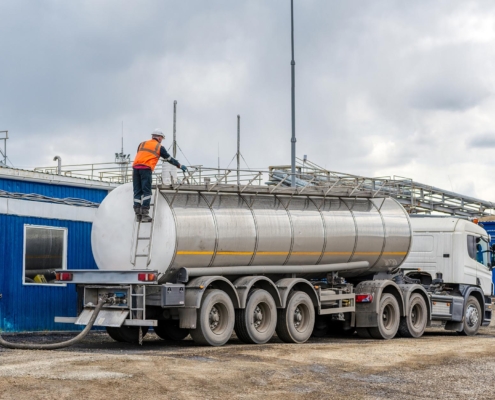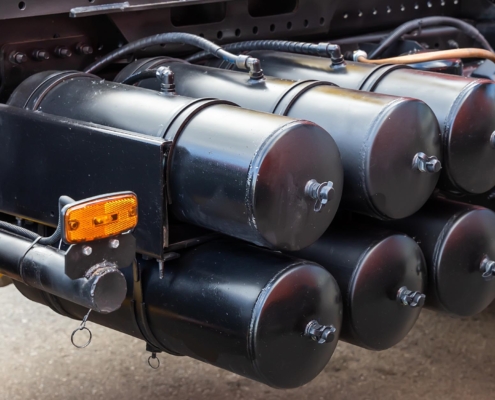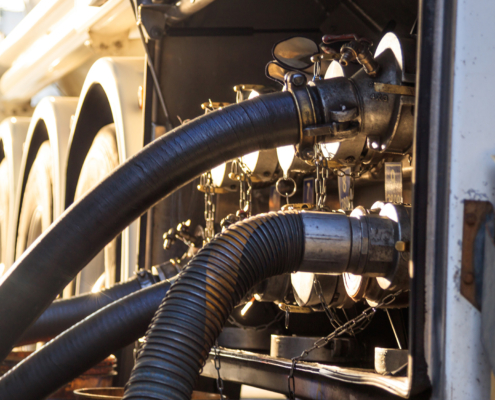
The Truck Blower Installation Process Explained
A truck blower helps clean the engine’s air intake, allowing for better airflow and potentially improving gas mileage, performance, and efficiency. Installing one isn’t difficult, but it does require some preparation. This guide outlines the 10 steps involved in the truck blower installation process, identifies different types of device, and explains why working with a partner like White Tank & Truck Repair can be helpful.
What Are Truck Blowers?
A truck blower is an air intake cleanliness device designed to keep debris from entering the engine’s air intake. It works by blowing away any dirt, dust, or other particles that could otherwise clog the system. Having a functioning blower can help improve a truck’s fuel economy and engine performance by providing more consistent airflow.
Truck blowers vary in size and shape depending on the type of engine they are installed on. Some are mounted directly onto the engine block, while others may be mounted elsewhere in the vehicle. Depending on your needs, you may want to consider installing an aftermarket truck blower for extra protection against dirt and dust.
Types of Truck Blowers
There are different types of truck blowers, each designed for specific applications:
Dry Bulk Blowers
Dry bulk blowers transport dry bulk materials such as cement, sand, and flour. Typically designed to handle free-flowing, non-hazardous materials, they create a vacuum that sucks in the material and then blows it out through a discharge nozzle.
One of the key advantages of dry bulk blowers is their ability to move large quantities of material quickly and efficiently. They are also highly versatile and can be used in various settings, including construction sites, food processing plants, and chemical plants.
Pneumatic Trailer Blowers
Pneumatic blowers are similar to dry bulk blowers, but designed to handle more hazardous materials, such as chemicals and pesticides. They work by creating a high-pressure air stream to transport the material through a pipeline.
One of the critical advantages of pneumatic blowers is their ability to transport materials over long distances without manual intervention. They are also highly efficient and can be used in a variety of settings, including chemical plants, refineries, and wastewater treatment plants.
Liquid Bulk Compressors
Liquid bulk compressors are designed to transport liquids such as oil, gasoline, and chemicals. They work by compressing the liquid and using a high-pressure air stream to move it through a pipeline.
A key advantage of liquid bulk compressors is their ability to transport large volumes of liquid quickly and efficiently. They are also highly versatile and can be used in a variety of settings, including oil refineries, chemical plants, and transportation facilities.
If you’re interested in the truck blower installation process, be sure to check out this article that covers truck diagnostics.
The Step-by-Step Truck Blower Installation Process
1. Prepare your vehicle: Before beginning the installation process, make sure your vehicle is completely off and its battery disconnected so that you don’t cause any damage to components or yourself during installation. An installation provider like White Tank will have all the necessary tools and materials before beginning.
2. Disconnect air intake hose: Before mounting the blower, an installation expert will disconnect the air intake hose from its current connection point on the engine block or at another location in your vehicle. This will allow access to the area where you’ll be mounting your truck blower.
3. Mount the blower: Once you’ve cleared away enough space to mount your truck blower, your installation partner will attach it securely with screws or bolts depending on how it came packaged with instructions for installation. This step must be done correctly since a poorly mounted blower can cause problems down the road if not done properly now!
4. Connect the hose: The air intake hose will be attached again by connecting one end directly to your new truck blower and running it through any available space in your vehicle toward its original connection point near or on the engine block. Ensure everything is snugly attached so as not to leave room for potential leaks later on.
5. Test for leaks: Once everything has been connected, turn your vehicle back on and let it idle for a few minutes while checking for any potential leaks around where you’ve just connected everything. If everything looks good, proceed to the next step. If not, try tightening connections or re-installing parts until no further leaks are present before installing.
6. Tighten up connections: Now tighten all connections, ensuring there is no room for leakage anywhere along hose lines or between parts (this includes both electrical and mechanical connections). Be careful not to over-tighten anything, as this can also lead to detrimental problems later down the road!
7. Run a system check: Once all connections have been tightened up, run a system check by turning your vehicle back on and allowing it to idle again while monitoring various readings, including RPMs and temperatures, among other things. If all readings look normal, then proceed with the next step, but otherwise contact the manufacturer for help troubleshooting before continuing with the process any further.
8. Reconnect battery: After successfully running the system, check and reconnect the battery, and be careful not to over-tighten terminals. This could cause harm when attempting future maintenance tasks, such as replacing spark plugs later.
9. Test operation of blower: Now turn off the ignition switch again and go around the entire vehicle testing the newly installed blower, being sure no unusual noises are coming from the unit itself (such as grinding/squealing), which could indicate improper mounting or installation somewhere along the process.
10. Test drive the vehicle: Finally, once all testing has been completed successfully, turn the ignition switch back on again and let the vehicle idle once more to do a final check of the operation of the entire system. If everything looks good, then drive safely, knowing the job has been done right the first time around.
The Benefits of Working With a Truck Blower Installation Expert
- Expertise: A professional truck blower installation expert like White Tank can offer extensive knowledge and expertise in selecting and installing the suitable blower for your truck.
- Time-saving: Hiring a professional can save you time and effort, as they have the necessary tools and equipment to quickly and efficiently install the blower.
- Quality: Working with a professional can help ensure the blower is installed correctly and meets the necessary safety standards.
- Customization: A professional can offer advice on the best type of blower for your specific needs, and may be able to customize the installation to meet your specific requirements.
- Warranty: When working with a professional, you may be able to take advantage of warranties or guarantees on the blower or installation.
White Tank & Truck Repair: the Expert Truck Blower Installation Partner for Your Operations
To ensure your truck is running in tip-top shape, entrust it to the White Tank & Truck Repair professionals. Our detailed blower installation procedure ensures your system will last for a long time. We can install different types of blowers, so you’ll have peace of mind knowing your truck will get where it needs to go. Get in touch now for a reliable blower installation today at White Tank.





